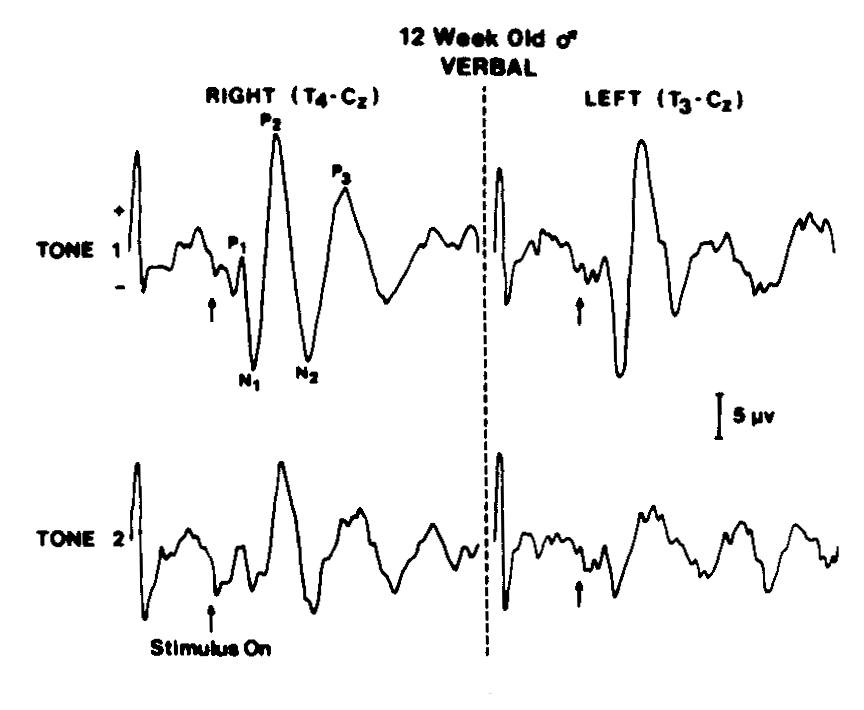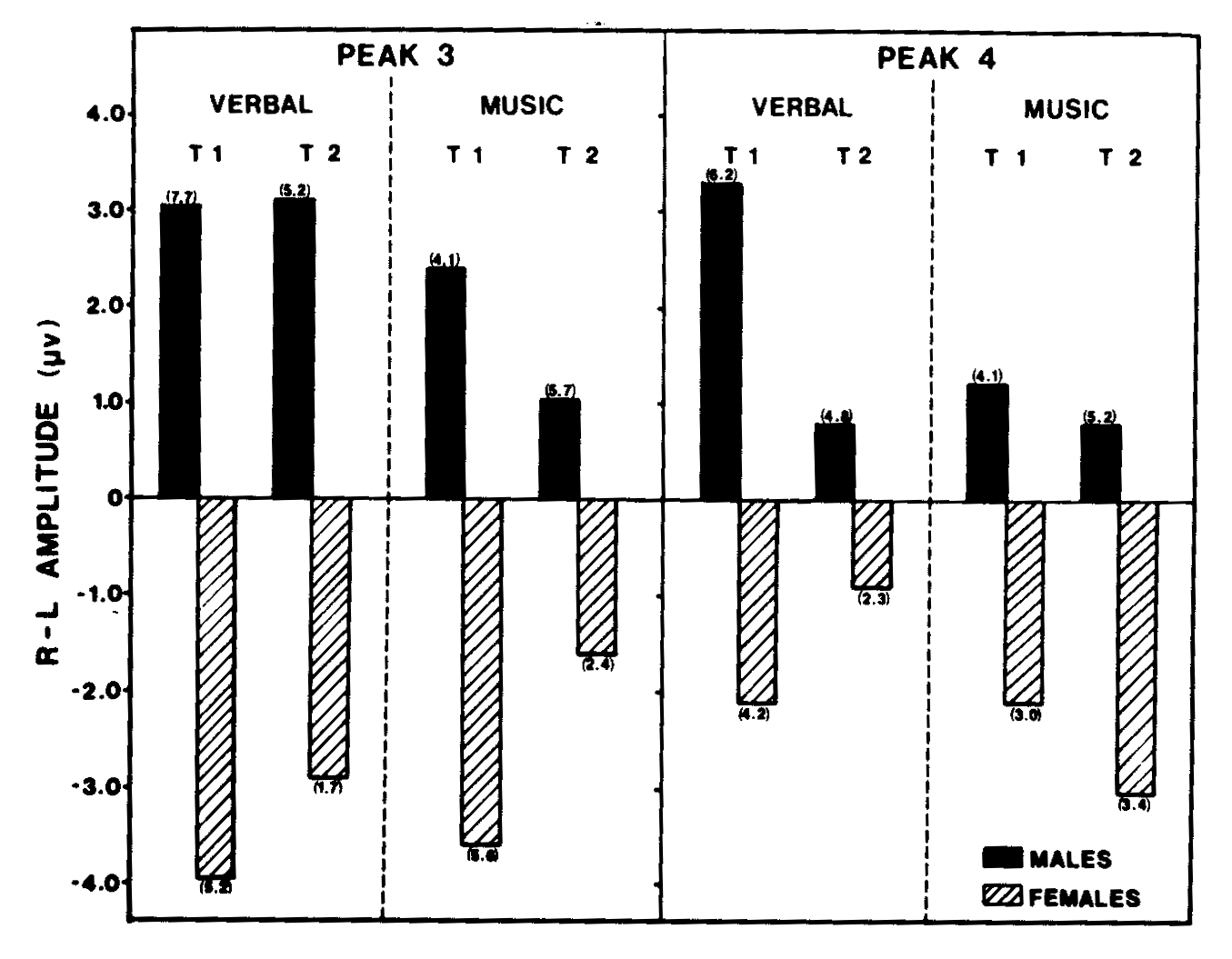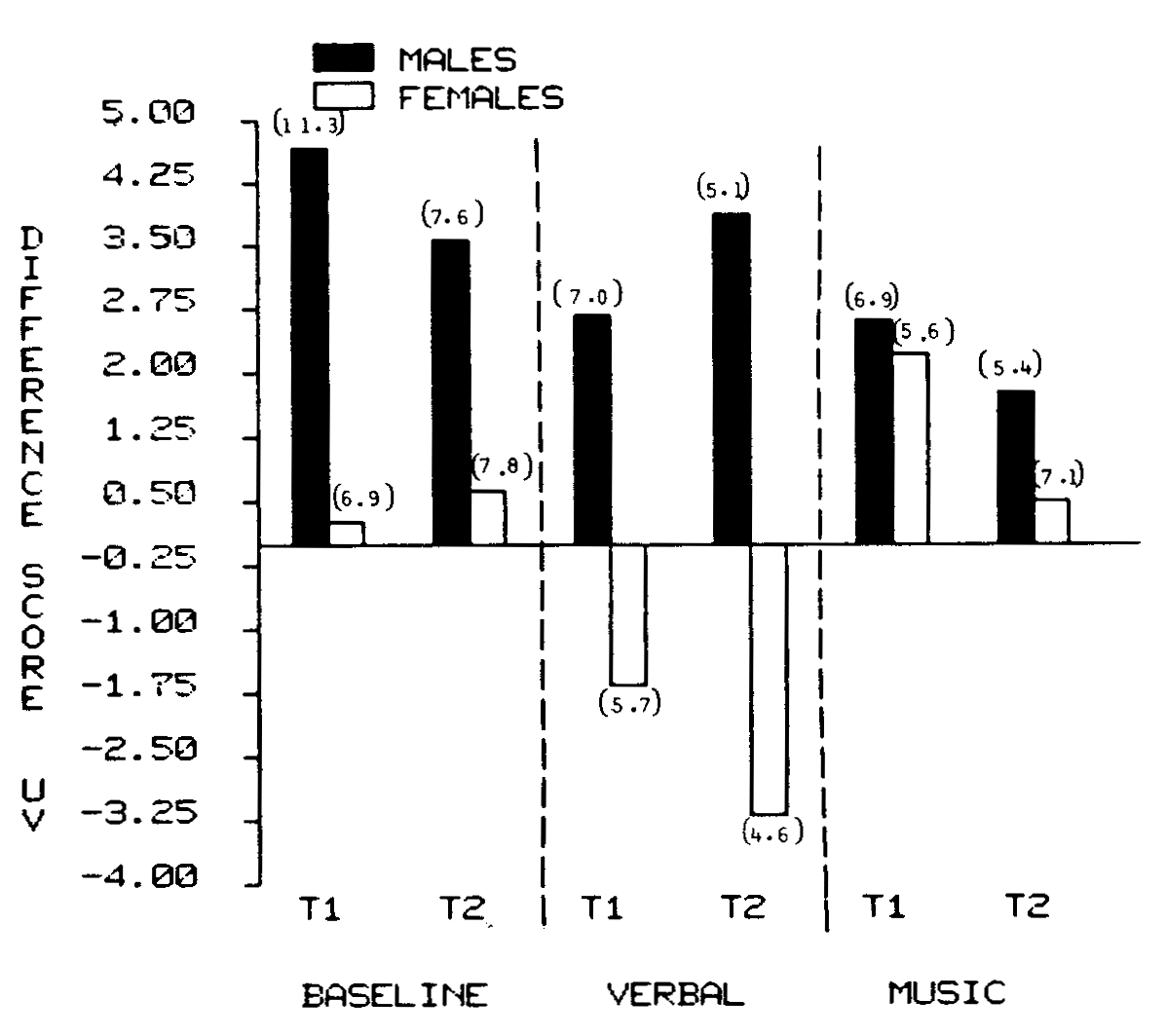
For instance, here are a few of the many cases where Japanese men and
women (at least traditionally) use different lexical items to express the
same meaning (examples from Janet Shibamoto, The Womanly
Woman, in Philips et al., Eds., "Language, gender and sex in comparative
perspective"):
|
|
|
|
|
|
|
|
|
|
|
|
|
|
|
|
|
|
|
|
|
|
|
|
|
|
|
|
|
|
|
|
|
|
|
|
|
|
|
|
The available terminology of ordinary English does not give us any easy way make it clear -- if we want to -- whether we are talking about biological or cultural differences. In recent years, many people have imposed this distinction on the terms "sex" and "gender", although in ordinary usage these terms overlap.
Here are some paired quotes from different recent newspaper stories,
in which uses of "gender" might easily have been replaced
by "sex," or vice versa:
We unconditionally reject [birth control] as a
means of gender selection.
In the new paradigm of sex determination
that is emerging, the fetus is roughly female to begin with.
She lifted one leg, saw the gender
of the baby, threw the leg down and said the baby was a boy
The 38-year-old Couric said the sex
of the baby hasn't been determined.
[gen-der]
1. Grammar.
1. a. A set of two or more
categories, as masculine, feminine, and neuter, into which words are divided
according to sex, animation, psychological associations, or some other
characteristic, and that determine agreement with or the selection of modifiers,
referents, or grammatical forms.
1. b. One category of such
a set.
1. c. The classification of
a word or grammatical form in such a category.
1. d. The distinguishing form
or forms used.
2. Classification of sex.
The definition of sex in the same dictionary starts from the biological question of reproductive function, but extends to all associated characteristics:
[sex]
1. a. The property or quality
by which organisms are classified according to their reproductive functions.
1. b. Either of two divisions,
designated male and female, of this classification.
2. Males or females collectively.
3. The condition or character
of being male or female; the physiological, functional, and psychological
differences that distinguish the male and the female.
4. The sexual urge or instinct
as it manifests itself in behavior.
5. Sexual intercourse.
6. The genitalia.
The dictionary definitions are consistent with the overlapping usage seen in the newspaper quotes.
Nevertheless, as indicated earlier, in recent years many people have decided to use this pair of terms to express the newly-salient distinction between biological and cultural aspects of reproductive status. Roughly, in this way of talking, sex is genetics and physiology, while gender is culture and identity. From a recent medical text:
With respect to the length of the vocal folds (the tissue in the larynx that is responsible for producing voiced speech), this overall difference between the sexes is magnified by approximately a factor of four: the vocal folds of post-pubescent males average about 30-40% longer than those of females of the same age.
Because the larynx also drops lower in the neck in post-pubescent males, the overall male vocal tract length is about 15% longer on average.
As a result of these laryngeal changes, adult human males have significantly lower voices than females do, out of proportion to their rather small different in average height. Though the pitch of anyone's speech depends very much on circumstances, under comparable conditions, human females voices are likely to show pitches roughly double those of male voices.
None of the other species of apes shows a similar vocal dimorphism, although overall size differences between the sexes are much larger in other apes than in homo sapiens.
It is claimed (de Lacoste et al. 1986) that sex differences in corpus callosum size appear by 26 weeks prenatal.
The sexual dimorphism of the corpus callosum is said to contrast with other aspects of brain anatomy, where average sizes, corrected for overall brain size, show no significant differences between males and females. The corpus callosum does not appear to be dimorphic in monkeys and prosimians, while evidence from apes is uncertain.
Such differences suggest that interhemispheric communication may differ between the sexes. Speech and language tend to be lateralized on the left, or dominant, side of the brain, while some other functions such as visuospatial integration and emotional appreciation of context are lateralized on the opposite side.
The studies used measurements of Auditory Evoked Potentials (AEP). In the AEP technique, recordings are made from scalp electrodes. The intensity of the recorded signal depends on the amount of activity in the neural tissues in the brain region near the electrode location. When a sudden sound, typically a beep-like "tone pip," is heard, there is a corresponding burst of AEP over a period of a second or so.
In these studies, tone pips were presented in pairs; each tone was a tenth of a second long, and the tones in each pair were two seconds apart. The tones were presented in three conditions, called music, verbal and baseline. In the music condition, classical music was played as a background. In the verbal condition, the background was passages from a second-grade reader, read by a female voice. In the baseline condition, the background was a white-noise hiss.
In the studies being discussed, what matters is the difference between the signal recorded on the right side of the head and the signal recorded on the left side of the head. The figure below shows the AEP recordings for one presentation of a pair of tones to a 3-month-old male infant in the "verbal" condition:

You can see that the signals from the left-side electrodes (especially the extrema labelled N2 and P3) are systematically smaller than the signals from the right-side electrodes.
As the graph below indicates, this pattern is quite regular for the male 3-month-olds in all conditions -- the right-side electrodes show higher activity regardless of the background condition. For the female three-month-olds, the situation is reversed -- they show higher activity in the left-side electrodes, regardless of conditions.

When infants are tested at the age of six months, the situation is different.
The male six-month-olds still show the same pattern of greater right-side
response regardless of background condition. The female six-month-olds
show no significant lateralization for the baseline condition, and show
the verbal condition with more activity on the left side, while the music
condition shows more activity on the right side. This is the pattern expected
for adult subjects.

Thus the infants at three months show opposite condition-independent
lateralization, while at six months, the female infants seem to have developed
the adult pattern, while the males are still showing the same immature
pattern as at three months.
We should mention in passing that other studies have shown that human infants have some phonetic perception abilities essentially from birth, a matter that we will return to later in the lecture on child language acquisition.
No one knows what these infant AEP differences mean -- beyond the fact that there are apparently some real sex differences in developmental lateralization of brain function. These sex/language differences in 3- and 6-month-old infants are much larger than anything that can be measured in adults.
We will return to questions of this kind in the lecture on Neurology and Pathology of Language. For the moment, the only thing that matters about Kimura's findings is that they show some differences between men and women in functional localization of language skills in the brain.
Functional differences
No one knows why the sex difference in corpus callosum size exists, if indeed it has any function. Nor does anyone really know why larynx size and position differ.
It is usually assumed that sexual dimorphism arises as a result of within-species reproductive competition. This is a plausible account in the case of larynx size -- a deeper voice, sounding like it comes from a larger person, might have been helpful in impressing potential mates or intimidating potential rivals. It is less clear that there is any story of this kind about the differences in brain anatomy and physiology.
It is tempting to speculate that the brain differences are somehow connected to the hypothetical division of labor on the Pleistocene plains. Perhaps there was evolutionary pressures for greater communicative abilities among women, or better integration of language functions with other kinds of processing. Alternatively, since some visuospatial functions are localized in the non-dominant hemisphere, and males tend to perform better than females on tasks such as visualization of object rotation, greater lateralization of male brains might have something to do with development of hunting-related skills like long-distance navigation and projectile aiming. However, recent research shows that females in fact excel in other spatial skills, involving learning and remembering where things are.
A recent news release from the Educational Testing Service reiterates the general finding that females tend to score somewhat higher than males on language-related tests:
The study indicated that among all girls and boys nationally, the familiar gap in math and science is about one-quarter of what it was in 1960. However, differences persist among very high achieving students. Over the same 30-year period, boys have not closed the gap in writing.
It is important to keep in mind, while considering these issues, that
the average differences in these various skills between men and women are
fairly small, and that there is a great deal of variation among individuals
of either sex. To the extent that there are systematic differences in language
usage between men and women, we must look elsewhere for an explanation
than in the anatomy and physiology of their brains.
Quite a few languages show lexical and morphological differences like
those exemplified above for Japanese. In some Native American languages,
grammatical forms of verbs are inflected differently according to the sex
of the speaker. Examples from the Muskogean language Koasati are given
below:
|
|
|
|
|
|
|
|
|
|
|
|
|
|
|
|
|
|
|
|
|
|
|
|
A number of stylistic differences between female and male speech have been observed or claimed. Women's speech has been said to be more polite, more redundant, more formal, more clearly pronounced, and more elaborated or complex, while men's speech is less polite, more elliptical, more informal, less clearly pronounced, and simpler.
In terms of conversational patterns, it has been observed or claimed that women use more verbal "support indicators" (like mm-hmm) than men do; that men interrupt women more than than they interrupt other men, and more than women interrupt either men or other women; that women express uncertainty and hesitancy more than men; and that (at least in single-sex interactions) males are more likely to give direct orders than females are.
For nearly all of these issues of stylistic and conversational differences, there are some contradictory findings, and it seems that one must look closely at the nature of the circumstances in order to predict how men and women will behave verbally.
Nevertheless, it is clear that in many circumstances, women and men tend to use language differently.
Within the domain of culture, two broad classes of explanations for such gender effects have been offered: difference theories and dominance theories.
According to difference theories (sometimes called two-culture theories), men and women inhabit different cultural (and therefore linguistic) worlds. To quote from the preface to Deborah Tannen's 1990 popularization You just don't understand, "boys and girls grow up in what are essentially different cultures, so talk between women and men is cross-cultural communication."
According to dominance theories, men and women inhabit the same cultural and linguistic world, in which power and status are distributed unequally, and are expressed by linguistic as well as other cultural markers. In principle, women and men have access to the same set of linguistic and conversational devices, and use them for the same purposes. Apparent differences in usage reflect differences in status and in goals.
The general consensus is that both sorts of explanations are appropriate
to some degree, but the discussion is sometimes acrimonious and political.
For instance, Tannen has been criticized by some feminist writers as a
"deeply reactionary" "apologist for men", who "repeatedly excuses their
insensitivities in her examples and justifies their outright rudeness as
merely being part of their need for independence." Those who criticize
Tannen in this way argue that the behavior of the men in her examples reflects
a desire for domination rather rather than a different set of cultural
norms.
An interesting analogy between sexuality and language is suggested in
the following quote from a book review in the October, 1997 issue of Scientific
American, written by anthropologists Tom Boellstorff and Lawrence Cohen:
The first and most important of these was Deborah Tannen's 1990 work You just don't understand. Reader reviews from www.amazon.com:
Absolute twaddle. Gray is a charlatan at best,
a caveman at worst. This take on gender relations is insulting to men,
women, and aliens.
These ideas formed the basis of a running gag in the 1992 movie White Men Can't Jump. Gloria (Rosie Perez) has been reading Tannen's book, and tries the experiment of telling her boyfriend Billy (Woody Harrelson) that she's thirsty. When he responds by getting her a glass of water, she berates him for treating her statement as a request for him to solve a problem -- allegedly the typical male response -- instead of expressing sympathy for her thirst, which as a woman is what she really wanted.
In Tannen's version, women use language to achieve intimacy, resulting in what she calls "rapport talk." For women, "talk is the glue that holds relationships together," and so conversations are "negotiations for closeness in which people try to seek and give confirmation and support, and to reach consensus." Men, on the other hand, use language to convey information, resulting in what Tannen calls "report talk." Because men maintain relationships through other activities, conversation for them becomes a negotiation for status in which each participant attempts to establish or improve his place in a hierarchical social order.
Is this true? Many people have criticized Tannen's ideas as social stereotypes, based on overgeneralization of limited research findings, or on anecdotes. For example, Alice Freed writes (in the Proceedings of the Second Berkeley Women and Language Conference)
Overall, the extent to which gender differences are emphasized seems to have a strong political component. Certainly the more abstract interpretations that are sometimes given to observed differences -- for instance, the conclusion that women are more cooperative and men more competitive in conversation -- are highly political. In evaluating such interpretations, it is well to remember how widely they can vary.
An older -- and contradictory -- set of sexist stereotypes about gender differences in communication are expressed in Rudyard Kipling's 1911 poem The female of the species. Kipling depicts the stereotypical man as an equivocator, "whose timid heart is bursting with the things he must not say." Men in conversation are therefore ready to compromise and to discuss all sides of an issue, and tend to be diverted by humor, doubt and pity. A woman, on the other hand, "who faces Death by torture for each life beneath her breast / May not deal in doubt or pity -- must not swerve for fact or jest." For a woman, "her contentions are her children," and anyone who disagrees will be met with "unprovoked and awful charges -- even so the she-bear fights." The conclusion, for Kipling, is that women should be excluded from politics:
We should have learned since Kipling's time that this rush of feeling, in response to the well-crafted expression of a social stereotype, is not to be trusted. To quote from a recent article by Penelope Eckert and Sally McConnell-Ginet:
The most difficult area in English is the pronoun system. Third-person
singular pronouns are marked for gender -- he/she/it. The traditional usage
was to view the masculine pronoun as unmarked. Here is a link to a
wide-ranging discussion of this problem and current alternatives for
dealing with it.